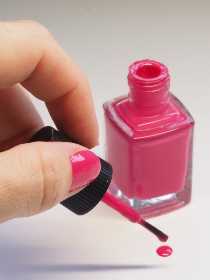03 Jun Does Nail Polish Really Affect Pulse Oxygen Reading?
MedicalResearch.com Interview with:
 Dr James Purcell
Dr James Purcell
University College Cork and
South Infirmary Victoria University Hospital
Cork, Ireland
MedicalResearch.com: What is the background for this study?
Response: Nail varnish and acrylic nails are common accessories and as such are commonly encountered by an array of healthcare professionals in various scenarios when SpO2 readings may be part of patient care.. Colloquially there was a wide variety of approaches and beliefs as to whether or not these treatments impacted on SpO2 readings. This is due to the fact that the Digital Pulse oximetry relies on the passing of a wavelength of light through a pulsatile nailbed to a sensor on the opposite side of the finger tip in order to read SpO2 levels. Any potential interference to this process by polish of certain hues, or acrylic was therefor believed to impact on the resultant readings
As such it was decided to analyse the actual level of knowledge and variety of approaches to the issue by means of a multisite study involving Consultants, NCHDs, and nursing staff in areas where this issue may arise. A second, experimental part of the study was set up using healthy volunteers and venous congestion and hypoxia modelling. Nail varnish of differing hues and acrylic nails were applied and results of SpO2 readout in healthy and pathological models with and without nail treatments applies were analysed.
MedicalResearch.com: What are the main findings?
Response: The main findings of the study showed a dizzying array of beliefs and approaches to the issues mentioned above across all specialities and levels of experience. For such a seemingly simple and straightforward technique, digital pulse oximetry should perhaps not be expected to be providing such variation in approach due to the presence of such commonly encountered nail treatments. Experimentally the study showed no significant difference in SpO2 readings in healthy patients or in the pathology models between untreated nails and nails with the treatments applied.
MedicalResearch.com: What should readers take away from your report?
Response: Old wives tales and hand me down stories are not acceptable models in modern medicine. We strive to encourage , practice and promote evidence based medicine and as such we should apply it to all aspects of our practice. While this study may only concern itself with a small, yet almost ubiquitous aspect of patient care, it has an impact on patient wellbeing and interactions, hospital procedures, patient safety and satisfaction and inter professional relationships. It deserves to be addressed in a scientifically robust fashion. Just because something has always been done in a certain way is no justification for its continued implementation if technology and scientific studies do not support it.
MedicalResearch.com: What recommendations do you have for future research as a result of this study?
Response: Future research should involve patient perspective surveying directly related to this studies aims. It should also involve the analysis of the effects of the above treatments in pathologically relevant patients as a progression from the model studies. Education and training of relevant specialities and authorities should follow where relevant.
No disclosures
Citation:
Euroanaesthesia poster:
The information on MedicalResearch.com is provided for educational purposes only, and is in no way intended to diagnose, cure, or treat any medical or other condition. Always seek the advice of your physician or other qualified health and ask your doctor any questions you may have regarding a medical condition. In addition to all other limitations and disclaimers in this agreement, service provider and its third party providers disclaim any liability or loss in connection with the content provided on this website.
Last Updated on June 3, 2018 by Marie Benz MD FAAD
